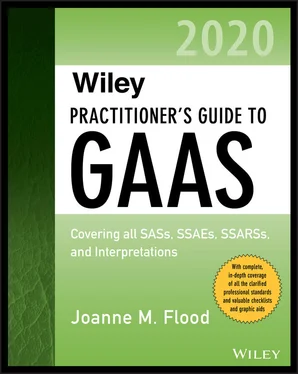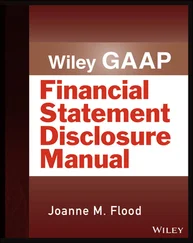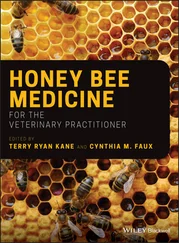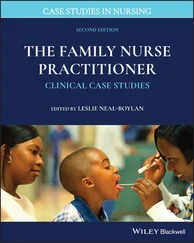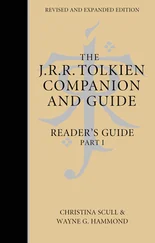The two approaches are clear alternatives only in complex situations in which a misstatement accumulates in the balance sheet. In fact, the mechanical application of the iron curtain approach in a more complex situation may have the opposite effect from what is intended. For example, if warranties payable were overstated in the prior period by $300 and understated in the current period by $200, the aggregate effect on the current period income statement would be a $500 overstatement of income before tax. The uncorrected prior period misstatement would have a $300 carryover effect in the current period income statement. Therefore, careful consideration of the impact of prior period adjustments is needed, and individual facts and circumstances must be considered.
Usually the only practical way to consider whether financial statements are materially misstated at the conclusion of the audit is to use a worksheet that determines the combined effect of uncorrected misstatements on important totals or subtotals in the financial statements (e.g., current assets, current liabilities, income before taxes, income taxes, net income, total assets, total liabilities, and stockholders’ equity). It may be helpful to categorize the misstatements by their nature: factual, judgmental, or projected from a sample. Use of such worksheets is fairly common in auditing practice. However, it is important to recognize that the auditor may use a different amount in evaluating whether the financial statements are materially misstated than was used in planning the audit. Qualitative considerations may cause the auditor to consider smaller detected misstatements to be material. Also, for misstatements that have an effect only on the balance sheet or that affect only classification within a financial statement, an amount may have to be larger to be considered material.
Documentation Requirements
The auditor should document the following:
The benchmark below which misstatements are considered clearly trivial
All misstatements, indicating corrected or uncorrected, accumulated during the audit
The auditor’s conclusion as to whether uncorrected misstatements, individually or in the aggregate, do or do not cause the financial statements to be materially misstated and the basis of that conclusion
(AU-C 450.12)
The auditor should create a summary of uncorrected misstatements, other than those that are trivial, related to misstatements; this summary should be documented in a way that allows the auditor to consider:
The aggregate effect of uncorrected misstatements on the financial statements,
The evaluation of whether materiality levels have been exceeded, and
The effect of uncorrected misstatements on ratios, trends, and legal, regulatory, and contractual segments.
(AU-C 450.A28)
15 AU-C 500 Audit Evidence
Scope
Definitions of Terms
Objective of AU-C Section 500
Requirements
General Guides to the Reliability of Evidence
Using a Management’s Specialist’s Information
Inconsistency or Doubts about Reliability of Evidence
General Guides to Sufficiency of Evidence
Audit Procedures for Obtaining Audit Evidence
Interpretations
The Effect of an Inability to Obtain Evidential Matter Relating to Income Tax Accruals
Auditor of Participating Employer in a Governmental Cost-Sharing Multiple-Employer Pension Plan
Auditor of Participating Employer in a Governmental Agent Multiple-Employer Pension Plan
AU-C 500 provides auditors with the basic guidance on what constitutes audit evidence and the procedures to obtain it. The other topics in the 500 section of the clarified auditing standards give in-depth information on specific areas, sampling, opening balances, accounting estimates, related parties, subsequent events, and analytical procedures.
Source: AU-C 500.05.For definitions related to this standard, see Appendix A, “Definitions of Terms”: Accounting records, Appropriateness (of audit evidence), Audit evidence, Management’s specialist, Sufficiency (of audit evidence)
OBJECTIVE OF AU-C SECTION 500
The objective of the auditor is to design and perform audit procedures that enable the auditor to obtain sufficient appropriate audit evidence to be able to draw reasonable conclusions on which to base the auditor’s opinion.
(AU-C Section 500.04)
REQUIREMENTS
General Guides to the Reliability of Evidence
The auditor should consider the relevance and reliability of the audit evidence. (AU-C 500.07) Appropriateness of evidence depends on the circumstances, so there are important exceptions to the following presumptions. They are, however, useful general guides.
Evidential matter from independent sources outside an entity is more reliable than that secured solely within the entity.
Accounting data are more reliable when developed under effective internal control.
Direct personal knowledge obtained from the auditor’s own physical examination, inspection, observation, or computation is more reliable than information obtained indirectly.
Audit evidence is more reliable when it exists in documentary form.
Audit evidence provided by original documents is more reliable than audit evidence provided by photocopies or facsimiles.
(AU-C 500.A32)
When information produced by the entity is used by the auditor to perform further audit procedures (for example, analytical procedures), the auditor should obtain audit evidence about the accuracy and completeness of the information. See the chapter on AU-C 520 for additional guidance. (AU-C 500.A33)
Using a Management’s Specialist’s Information
If audit evidence is created using the work of a management’s specialist, the auditor should be careful to evaluate the competence and objectivity of the specialist, get an understanding of the work, and evaluate the appropriateness of the work relevant to the related assertion. (AU-C 500.08) The auditor should ensure the information produced by the entity is accurate, complete, sufficiently precise, and detailed. (AU-C 500.09)
Inconsistency or Doubts about Reliability of Evidence
When audit evidence is contradictory or doubts arise as to its reliability, the auditor resolves the situation by modifying or adding procedures. The auditor should also consider the effect on other aspects of the audit. (AU-C 500.10)
General Guides to Sufficiency of Evidence
The amount of competent evidential matter necessary to provide a reasonable basis for an opinion depends largely on the exercise of professional judgment. Usually the auditor must rely on evidence that is persuasive rather than convincing; an auditor is seldom convinced beyond all doubt about all aspects of the statements being audited. There should be a rational relationship between the cost and the usefulness of evidence, but the difficulty and expense of a test are not valid reasons for omitting it.
Audit Procedures for Obtaining Audit Evidence
The auditor should obtain audit evidence to draw reasonable conclusions on which to base the audit opinion by performing audit procedures to:
Obtain an understanding of the entity and its environment, including its internal control, to assess the risks of material misstatement. These procedures are referred to as risk assessment procedures.
When necessary, or when the auditor has determined to do so, test the operating effectiveness of controls.
Читать дальше
